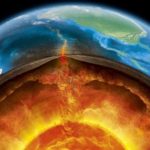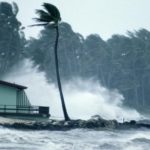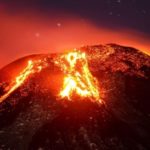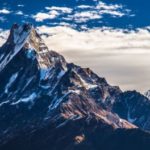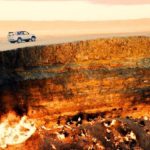Interesting facts about earthquakes
 Earthquakes are one of the most destructive and terrifying natural phenomena. They are almost impossible to predict, they can not be combated … There is only one thing left – to try to minimize the damage caused by them.
Earthquakes are one of the most destructive and terrifying natural phenomena. They are almost impossible to predict, they can not be combated … There is only one thing left – to try to minimize the damage caused by them.
Every year on our planet there are about a million earthquakes, but most of them are too weak to pose any threat.
Earthquakes can be caused both by natural causes, and by artificial ones, for example, underground explosions in mining operations.
Quite dangerous earthquakes occur on Earth on average twice a month, but not always in populated areas.
Earthquake on the ocean floor can cause a devastating tsunami.
Seismic waves from a deep earthquake under the bottom of the Sea of Okhotsk in 2013 reached Moscow, where they were registered seismographs.
One of the strongest earthquakes in history occurred in 1139 on the territory of present-day Azerbaijan, as a result of which the mountain collapsed into the river and blocked its course, giving rise to Lake Goygol.
The great Chinese earthquake in 1556 holds the record for the number of victims – it killed more than eight hundred thousand people.
The average earthquake lasts about a minute.
In Parkfield, USA, California, there is a bridge connecting two tectonic plates.
There are more earthquakes in the Northern Hemisphere than in the Southern hemisphere.
On the Moon, too, there are earthquakes, more precisely, moonquakes. Their nature is still not clear.
The first seismograph was invented in China almost two thousand years ago.
Almost 80 percent of all conspicuous earthquakes occur under the Pacific Ocean.
After the earthquake in 1960 in Chile, the tsunami waves generated by it have traveled more than six thousand kilometers.
The maximum recorded speed of underground waves is 360 kilometers per hour, comparable to a racing car.
Animals, such as rats, can somehow feel the threat of an earthquake in some way.
The maximum depth at which the earthquake focal point was ever recorded is seven hundred and fifty kilometers.
The earthquake in Japan in 2011, the tsunami wave after which destroyed the nuclear power plant in the city of Fukushima, was so strong that it increased the oscillation of our planet around its axis by sixteen centimeters.
The Inca people in South America have known since ancient times about earthquakes, and therefore the structures of the Incas were built by earthquake resistance.
After the earthquake in the US in 1811, on some sections of the Mississippi River, its course reversed for some time.
After the earthquake in 2015 in Nepal, the height of Everest decreased by two and a half centimeters.
The most earthquake-prone countries in the world are Japan and the Republic of Chile.
The longest recorded earthquake occurred in 2004 in the Indian Ocean, it lasted almost ten minutes.
The earthquake in Chile in 2010 moved the city of Concepcion three meters to the side.
Every fourth earthquake in the world occurs in Japan. In 1930, they were registered already 5744.


